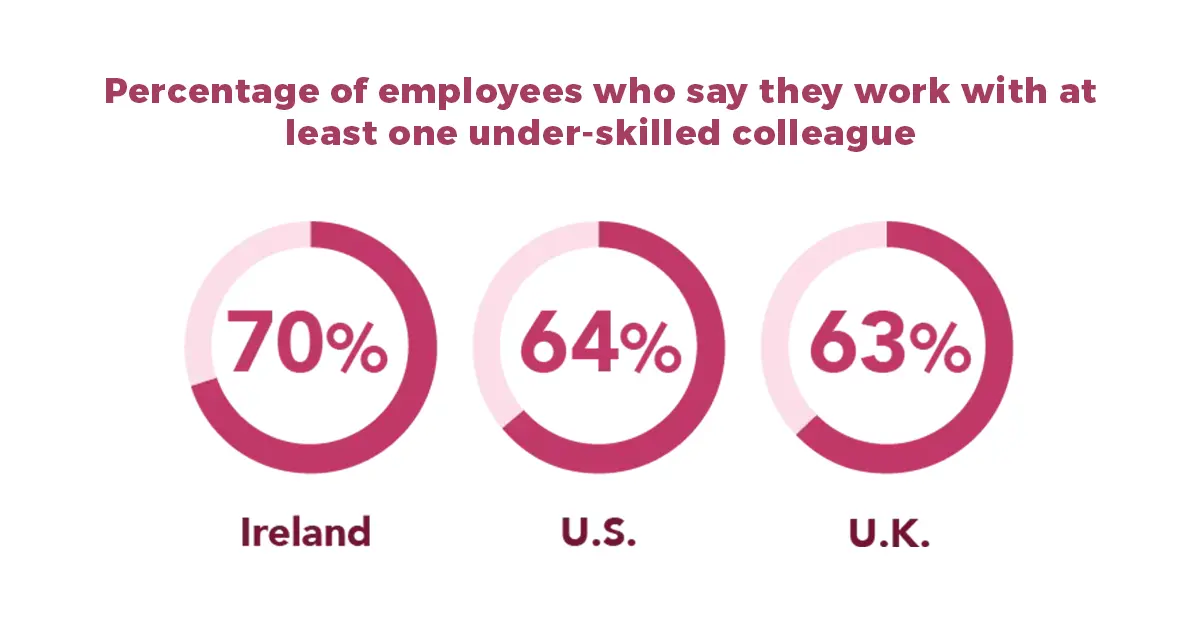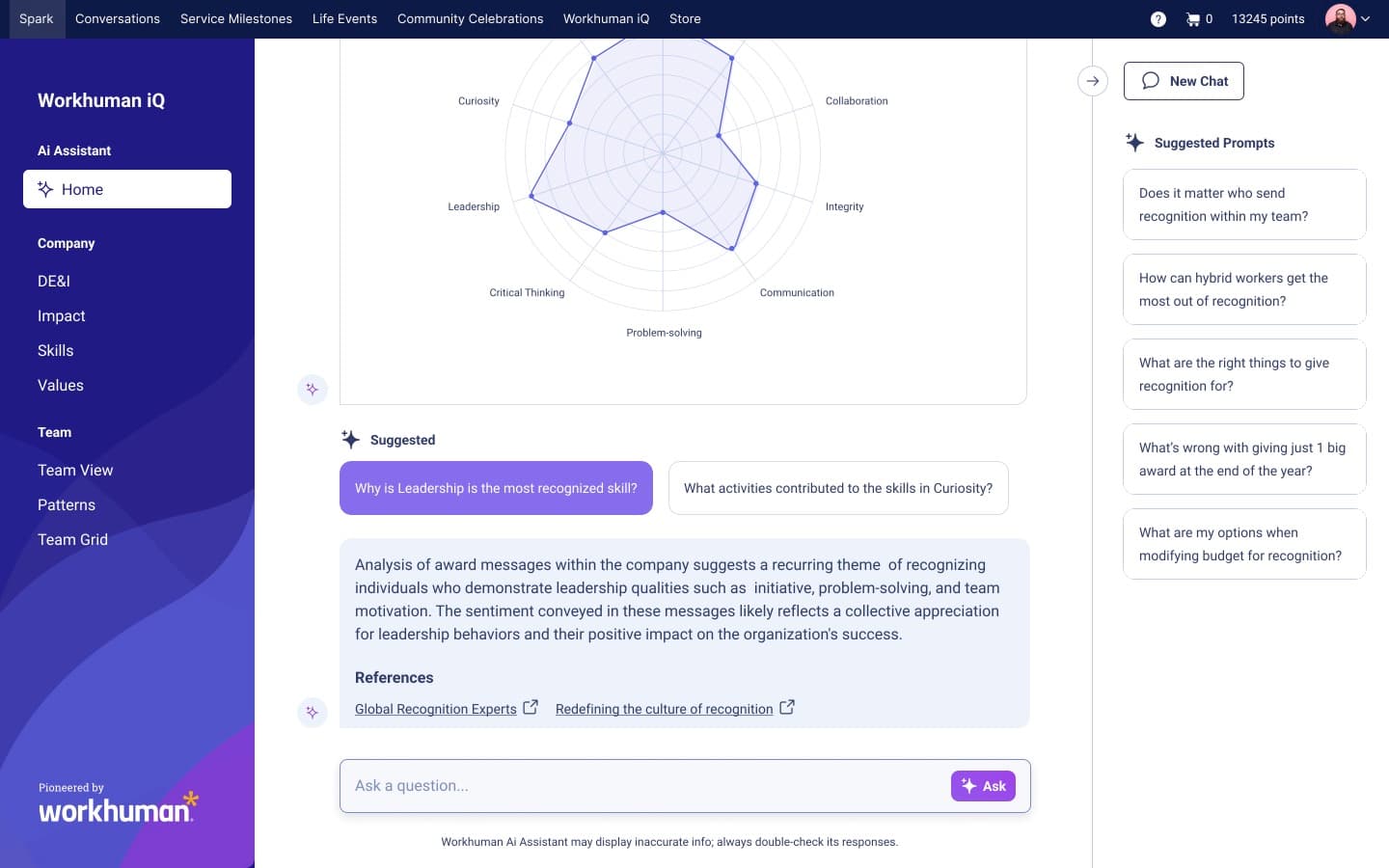Talent Mobility 101: Strategies for a Thriving and Adaptable Workforce

Talent mobility is increasingly becoming a fundamental aspect of strategic human resource management, designed to nurture and retain top talent within an organization.
It's a dynamic approach that goes beyond traditional career progression models, encouraging and facilitating the movement of employees across different roles, functions, or departments.
By leveraging the internal talent marketplace, companies can effectively align individual aspirations with organizational needs, unlocking a symbiotic growth path for both.
This organizational agility isn't just about filling vacancies; it's about understanding and leveraging the skills, experiences, and career interests of the workforce to foster innovation and adaptability.
Instituting a robust talent mobility program can lead to substantial benefits, from increased job satisfaction and employee engagement to improved succession planning and talent retention.
By investing in the development of their workforce, organizations can build a more responsive, skilled, and committed team ready to rise to the challenges of a rapidly evolving business environment.
Key takeaways
- Talent mobility enhances the alignment of employee skills with organizational needs.
- A focus on internal career mobility opportunities can result in higher engagement and retention.
- Strategic mobility practices foster innovation and adaptability in the workforce.
Understanding talent mobility
In today's dynamic work environment, the concept of talent mobility has become pivotal in harnessing the full potential of a workforce and fostering a culture of continual growth and learning.
What is internal talent mobility?
Internal talent mobility refers to the movement of employees within an organization across different roles, departments, or geographic locations.
It's a strategic approach that promotes the optimal use of an employee's skills and talents where they can serve best.
As workplaces evolve, this model ensures that your team not only adapts to change but thrives in it.
Benefits of embracing internal mobility
When you embrace talent mobility, you reap significant rewards.
Productivity takes a leap forward as employees engage in roles that maximize their skill sets. Here’s a snapshot of the benefits:
- Growth Opportunities: Employees have the chance to expand their expertise and take on new challenges, leading to a more fulfilling career path.
- Employee Engagement: A dynamic internal career landscape keeps the job exciting, boosting morale and deepening commitment to your company.
- Increased productivity: Employees in roles that match their strengths tend to be more efficient and innovative, driving better business outcomes.
- Retention: An upward trajectory within the organization can decrease turnover rates as employees see a future with your company, making it easier to attract and retain talent.
Discover 4 effective ways to attract and retain great employees.
By implementing a talent mobility program, you encourage a resilient workforce that is proficient, motivated, and aligned with your organization's goals.
Strategic initiatives for successful talent mobility

Implementing strategic initiatives is essential to enhance your organization's talent mobility. A talent mobility strategy ensures employees are continuously developing and can move within the company to meet both their career goals and your business needs.
Developing a talent mobility strategy
Strategy is at the core of promoting talent mobility.
Start by aligning your talent mobility strategy with business objectives to ensure that it contributes to your company’s growth.
Objectives might include improving employee retention strategies, filling skill gaps, or fostering innovative thinking.
Define clear policies and develop a framework for talent mobility that encompasses employee aspirations, skill development, and the company’s strategic goals.
Career pathing and development programs
Talent management relies heavily on identifying and nurturing your workforce's career paths.
Establish learning and development programs that offer a variety of opportunities tailored to the individual goals and competencies of your employees.
Encouraging career pathing ensures that your team members understand their potential career trajectories within the organization and are equipped with the skills to navigate their journeys successfully.
Implementing talent mobility task forces
Forming a talent mobility task force is a proactive approach to driving these strategies effectively.
This dedicated team will be responsible for managing your internal talent pipelines, facilitating internal mobility opportunities, and measuring the success of initiatives.
An effective task force often involves cross-functional stakeholders who can champion career mobility across various departments and ensure alignment with the overall organizational talent management strategy.
Overcoming barriers to mobility
Enhancing talent mobility within your organization involves navigating through several critical barriers—ranging from skill deficits to rigid corporate cultures.
With the right strategies and tools, you can transform these obstacles into opportunities for growth and improved performance.
Identifying and addressing skills gaps

In our Global Human Resource Index survey, 63% of those surveyed in the UK indicated they collaborated with individuals whose skills did not match their present position. In the US, this percentage increased to 64%, and in Ireland, it climbed to 70%.
To effectively address skills gaps and build future workforce capability, it's vital to understand the specific competencies needed within your organization.
Assessing employee skills and comparing them against future business needs can uncover areas requiring development.
The Workhuman iQ team of data scientists and linguists developed a recognition-specific language model so you can see skills employees recognize in each other.
Map skills and shape development across your company with insight and guidance from Workhuman's newAI AssistantOpens in a new tab.

Proactive measures like targeted training can help bridge these gaps, ensuring your employees are prepared to step into new roles as needed. For more insights, explore how to overcome barriers to talent mobility.
Creating inclusive and diverse workplaces
A diverse workforce brings a multitude of perspectives and ideas, fostering innovation and resilience.
Making inclusivity a cornerstone of your company’s culture starts by recruiting from a variety of backgrounds and promoting an environment where all employees feel valued and heard.
Constructive dialogues and inclusive policies pave the way for every individual to achieve their potential. To delve further, consider the significance of building a talent mobility culture.
Discover 3 powerful strategies to shape the modern workplace into an inclusive and diverse environment.
Leveraging technology and infrastructure
Technology plays a crucial role in modernizing talent mobility.
Utilizing digital tools and software can simplify internal processes, improve communication, and provide data-driven insights to aid decision-making.
Moreover, the right infrastructure—both physical and digital—supports a dynamic work environment where talent can move fluidly to where it's most needed. Discover methods to integrate technology into talent mobility strategies by examining effective talent mobility programs.
Talent mobility program best practices
In any thriving organization, the emphasis on developing and retaining skilled employees is paramount. Implementing best practices in talent mobility is a direct investment in the company's future and the fulfillment of its employees' potential.
Promoting from within
Promotion from within not only boosts morale but also leverages the deep understanding and experience that existing employees have with your company's culture and processes.
To support this, create clear career pathways and ensure that your promotions are highly visible to encourage others.
Fostering a culture of lifelong learning
A culture that prizes lifelong learning is essential in facilitating talent mobility.
By providing access to continuous learning opportunities, such as workshops and online courses, you enable employees to expand their skill sets, making them more adaptable and better equipped for different roles within your organization.
Enhancing internal communication and collaboration
Effective internal communication and collaboration are the glue that holds the moving parts of talent mobility together.
Foster an environment where cross-department communication is the norm and cooperation is encouraged through regular team meetings and the use of collaborative tools.
Measuring and enhancing mobility outcomes
In talent mobility, success is gauged by the achievement of desired outcomes and the satisfaction of your employees. By tracking key metrics and leveraging feedback, you can enhance both the effectiveness and the experience of mobility programs.
Tracking mobility metrics and employee satisfaction
To truly understand the impact of talent mobility initiatives, you need to monitor a set of clearly defined metrics. This might include:
- Performance: Look at the contributions of employees who have moved into new roles or locations.
- Engagement: Measure the levels of enthusiasm and commitment in your mobile workforce.
- Retention: Keep tabs on how often employees stay with your company after a mobility experience.
- Promotion Rates: Track the career progression of employees who have been mobile within the company.
Equally important is measuring employee satisfaction.
This involves regularly surveying your staff to gauge their happiness and engagement levels. Questions can cover topics such as the support they received during a move and their satisfaction with their new roles and environments.
Continuous improvement through feedback loops
Feedback is the cornerstone of continuous improvement.
Establish feedback loops that enable employees to share insights about their mobility experiences. This might involve:
- Pre- and Post-Move Surveys: Collect data on the expectations and actual experiences of mobile employees.
- Regular Check-Ins: Encourage ongoing dialogue between employees and mobility managers.
- Exit Interviews: For those who leave, understanding their reasons can be invaluable.
Act on the feedback you receive to refine your processes. This could include:
- Training Programs: Enhance support for cultural integration or skills development.
- Policy Adjustments: Make changes to better meet the needs and preferences of your workforce.
A focus on outcomes, employee satisfaction, metrics, and feedback is not only about enhancing the mobility program.
It's about ensuring you thrive in today's dynamic talent landscape.
Use the data and opinions you collect to foster an environment where mobility is not just supported but celebrated as a key to personal and organizational growth.
Conclusion
In the evolving landscape of strategic human resource management, talent mobility emerges as a pivotal force for unlocking the symbiotic growth of both employees and organizations.
By fostering a culture that champions internal mobility, companies not only align individual aspirations with organizational goals but also cultivate a workforce that is adaptable, skilled, and deeply committed to the company's success.
This dynamic approach to career progression—encouraging movement across roles, functions, or departments—ensures that organizations remain agile and innovative in the face of rapid business changes.
Implementing robust talent mobility programs leads to enhanced job satisfaction, increased employee engagement, and improved talent retention, thereby securing a competitive edge in today's fast-paced business environment.
In essence, talent mobility is not just a strategy for filling vacancies; it's a comprehensive approach to nurturing a resilient, motivated, and future-ready workforce.